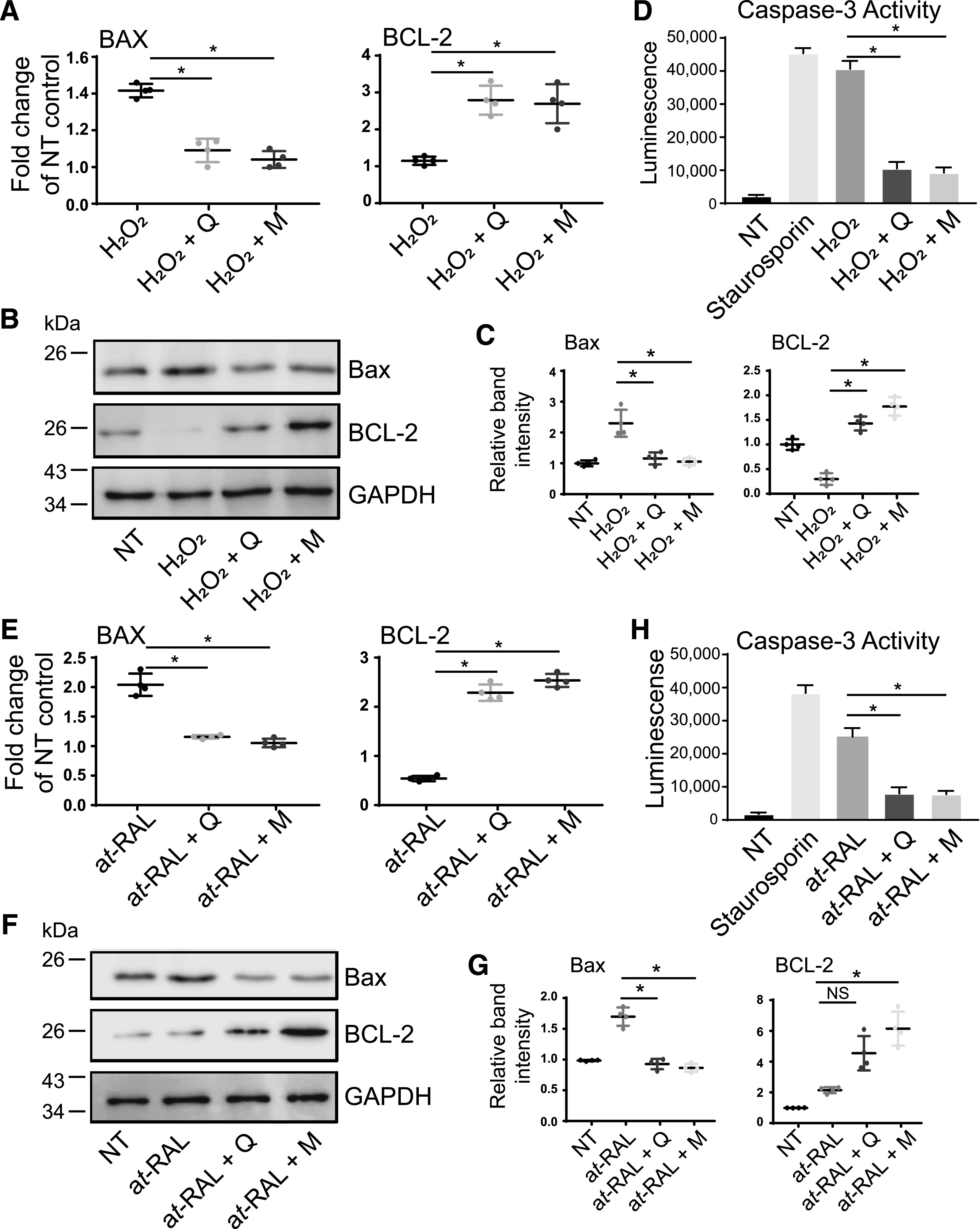Fig. 8.

The effect of flavonoids on levels of apoptotic markers in 661W cells exposed to oxidative stress or all-trans-retinal (at-RAL). 661W cells pretreated with 100 µM quercetin or myricetin for 16 hours were then treated either with H2O2 (250 µM) (A–D) or all-trans-retinal (15 µM) (E–H) for 24 hours. (A and E) RT-qPCR was performed to determine the mRNA expression levels of genes implicated in apoptosis, such as BAX and BCL-2. Relative fold change of marker genes expression was normalized to the expression of GAPDH. The mean of data from three independent experiments is shown. The expression of BAX was downregulated, and the expression of BCL-2 was upregulated in cells treated with flavonoid. The statistically significant changes in the expression of the specific gene (BAX or BCL-2) compared with stressor (H2O2 or at-RAL)-treated cells are indicated with asterisk (*). Error bars indicate S.D. Statistical significance was calculated with the one-way ANOVA and Dunnett’s post hoc tests. (B and F) Immunoblot analysis examining changes in the protein expression of BAX and BCL-2 in response to stress and flavonoid treatment. Representative immunoblots are shown. (C and G) Quantification of BAX and BCL-2 protein expression. Protein bands were quantified using densitometry analysis with ImageJ software. The mean of data from three independent experiments is shown. Band intensities were normalized to the intensity of GAPDH. The statistically different changes in the expression level of the specific protein (BAX or BCL-2) between stress-treated cells and flavonoid-treated stressed cells are indicated with asterisk (*). The nonstatistically different changes are indicated as NS. Error bars indicate S.D. Statistical analysis was performed with the one-way ANOVA and Dunnett’s post hoc tests. (D and H) Caspase-3 activity assay. 661W cells were seeded into 96-well plates. After the indicated treatment, media was removed, and 50 μl of caspase reagent was added to each well. Shown is the luciferase activity recorded after 60 minutes incubation in the dark at room temperature. The activity of caspase-3 was induced with staurosporin (positive control), H2O2, or all-trans-retinal, and it was significantly attenuated by treatment with flavonoid (*). Error bars indicate S.D. Statistical analysis comparing stress (H2O2 or at-RAL)-treated cells with flavonoid-treated cells was performed with the one-way ANOVA and Dunnett’s post hoc tests. D, treated with DMSO vehicle; M, treated with myricetin; NT, nontreated; Q, treated with quercetin.
